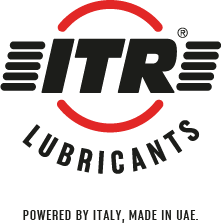ITR 4T Presto oil is a superior, high-performance four-stroke engine lubricant. The fluid is blended from high viscosity index base stocks and additives to meet the required specifications.
Why Use ITR 4T Presto Engine Oil?
Use ITR 4T Presto for these benefits;
The Meaning of SAE 15W50 Engine Lubricants
ITR 4T Presto is classified as SAE 15W50
What is the difference between 10W40 and 15W50?
Which engine is oil better, 15W40 or 15W-50?
Comparison Between ITR 4T Tuono, 4T Presto, and 4T Super Moto Brands
With ITR Lubricants, you have many choices to suit any four-stroke motorcycle. Below is a tabulation of the performance and characteristics of our outstanding 4T engine oils:
| Description | ITR 4T Tuono | ITR 4T Presto | ITR 4T Super Moto | |
| SAE20W-40 | SAE15W-50 | SAE10W-40 | SAE20W-50 | |
| Performance Standards | -Meets API SL-JASO MA2 | -Meets API SM-JASO MA2 | -Meets API SN-JASO MA2 | -Meets API SN-JASO MA2 |
| Kinematic Viscosity@100 °C (ASTM D 445): | 14.5-15.0 | 17.0-18.0 | 14.0-14.5 | 14.0-14.5 |
| Viscosity Index (ASTM D 2270): | 115 MIN | 140 MIN | 140-150 | 110 |
| CCS Viscosity (ASTM D 5293) : | <9500 cP@-15 °C | <7000 cP@ 20°C | <7000 cP@ 25°C | <9500 cP@ 15°C |
| Pour Point (ASTM D 97): | <-21°C | <-30°C | <-33°C | <-21°C |
| Flash Point (ASTM D 92 & 93): | >230 | >220 Min | >210 | >230 |
| Total Base Number(ASTM D 2896): | 7.0-8.0 | 7.0-8.0 | 8.0-9.0 | 8.0-9.0 |
ITR 4T PRESTO is a superior quality and high-performance lubricant for four stroke two and three wheelers. This oil is blended from high viscosity index base stocks and meets ISO-certified performance standards.
Request a quote for ITR 4T Presto from reputable ITR Lubricants.
